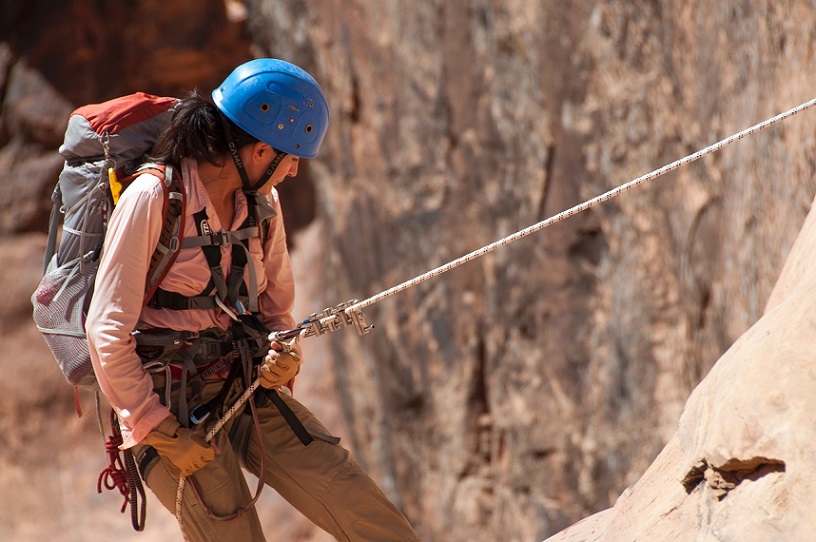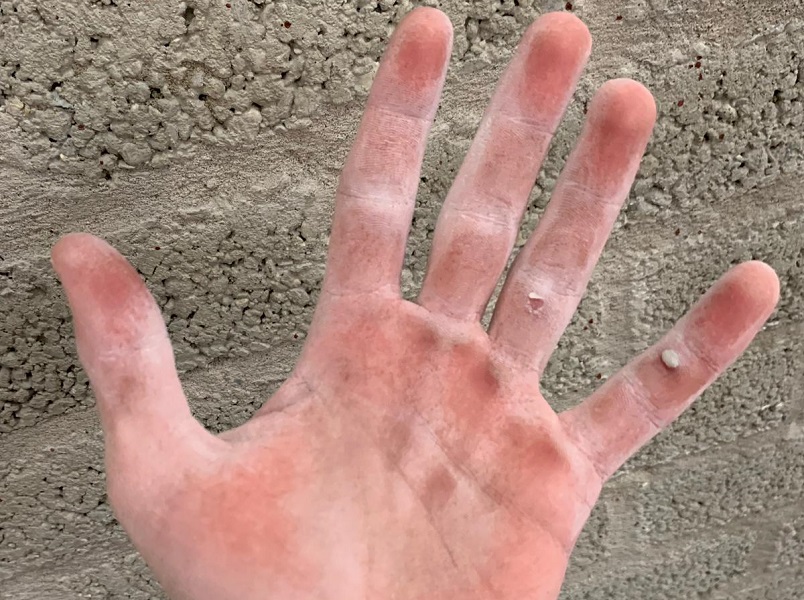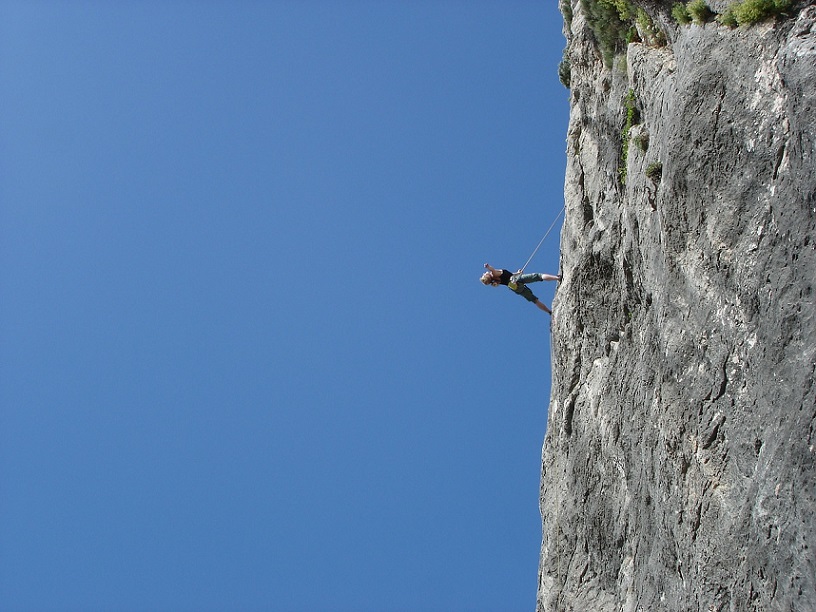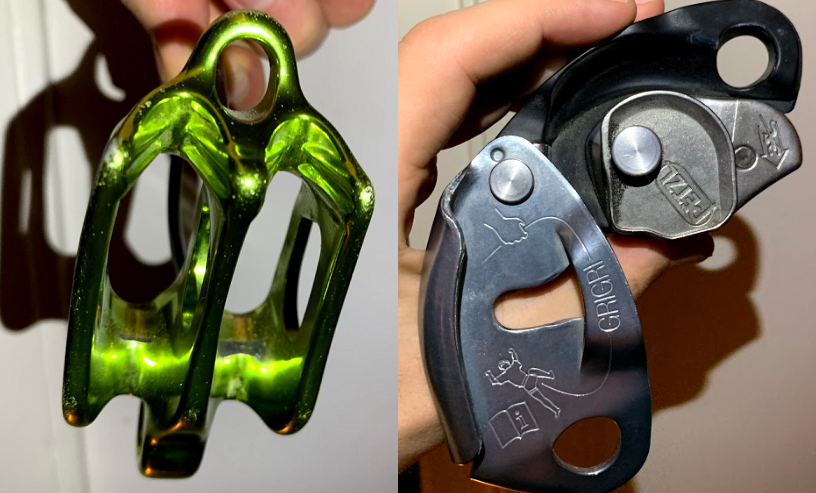When the best time is for ice climbing, is unfortunately not set in stone.
There are numerous of factors that determine when ice it suitable for climbing and when it is not. These factors include:
- How the ice was formed
- What the conditions of the ice are
- The location of the climb
- The season
- The temperature
- The time of the year
- The time of the day
- The altitude / atmospheric pressure
- Length of the days
In this article, we’ll explain how each of these factors play into the question when the best time is to go ice climbing.
The information in this post should help you make your own judgement whether the ice you seek to climb is suitable for it. Using common sense is key when it comes to ice climbing, as there are no definitive answers that can guarantee that the ice is climbable.
Understanding how ice forms
Ice that is suitable for climbing forms in one of two ways:
First, there’s ice that is being formed from snow due to pressure. The weight of the snow compresses the snow so much, that overtime the snow crystallizes in the form of ice. This is generally referred to as “alpine ice” or “blue ice”.
Secondly, there’s ice that is formed directly from water, suitably called “water ice”. Examples of this can be waterfalls that freeze during the winter. Usually though, this type of ice is rather formed from springs and spillovers after a heavy rainy season, because waterfalls proper tend to flow too quickly to freeze.
Ideally, water ice forms slowly and bonds with the rock, so that the resulting ice formation is incredibly solid.
Ice conditions
Not all ice is created equally.
As a result, some ice is better suited for ice climbing than other ice.
Although very cold conditions obviously builds ice quickly, the ice that forms this way is usually easily shattered and brittle. That’s not ideal for ice climbing, as it’s hard to stick your crampons, screws and picks in the ice.
Instead, the best ice is formed when the nights are moderately cold and the days are warmer, but stay right below the freezing temperature. That way the ice softens during the day, harmonizing the crystal structure at the molecular level, while allowing it to harden during the night.
For this type of ice to form, we’re talking about night temperatures of about -6 celcius (-30 F) and day temperatures of -1 celsius (-20F).
That doesn’t mean, though, that this is the only ice that’s suitable to be climbed. Any ice will be different depending on how low the temperature has been, how long the ice has been frozen for, the difference between day and night temperatures and the source of the ice.
Blue, green and yellow ice is generally solid ice suitable for climbing. White ice indicates a lot of air has been trapped within the ice, and can be too brittle to support your tools like screws.
Understanding that ice is different each time will help you take the necessary precautionary measures. Use common sense for each ice climb, and always test the ice if you can.
Best time of the day for ice climbing
The best time of the day to climb ice, again, depends, but is generally before noon.
At this hour, the sun is shining, allowing for a more temperate temperature which is simply nicer for you to climb in. At the same time, the ice is still cold from the night temperatures.
Location
Places like The Alps, Canada, the Scandinavian countries, Alberta and even Colorado are all great ice climbing destinations.
Obviously, the further away from the equator you get, the higher the chances are that you’ll find a great ice climbing location. The same rings true for distance to the center of the earth, though you should account for brittle ice at higher altitudes.
Due to the difference in altitude and distance to the equator of any ice climbing location, it’s impossible to give a one-size-fits-all answer to the question when the best time is to go ice climbing.
Here’s an indication though, for the best times to do ice climbing for the locations we just mentioned:
Norway/Canada: The entire winter, but the best time to ice climb here is during Februari-March. It is cold enough during the entire winter to ice climb, but the days get longer during this time so you’ll have more climbing hours.
Colorado: November – early May
Alberta: November – end of April
The Alps: Mid December – end of March
Note that every year the average temperatures during the winter varies greatly, especially now that global warming has set in. These are just generalizations.
If you want to find the best time for ice climbing in a location of your own choosing, it’s best to find the average temperatures throughout the year. Then find the point where the temperature dips to -30 F and plan your trip at least two weeks or so afterwards. Getting into contact with locals before your trip is a great way to maximize the chance that you’ll be able to ice climb during your trip.
Always have a backup plan in case the desired ice does not form!
Temperature and exposure to sunlight
The temperature is one of the most important determinants of what type of ice you will encounter.
Cold temperatures well below the freezing point may result in the phenomenon to which climbers refer as ¨dinner plating¨. This is ice that breaks off in large chunks as you swing your pick into it. Naturally, this is an ice condition which does not get a warm welcome with ice climbers (excuse the pun).
An example of where one would encounter brittle, ¨dinner platey¨ ice, is in the Pinnacle Gully, on Mount Washington, where conditions are always extreme:
One way to overcome dinner plating is to slowly tap your pick into the ice, being careful not to put too much force on the ice at once. By pulling yourself up slowly, one can climb a piece of ice that would otherwise have broken off. It goes without saying that this will not result in the safest climb possible.
Another way way to deal with dinner plating is the other extremity: forcefully hitting the ice in one swing, to get all the breakable ice out of the way, ideally leaving you with a more suitable ice type behind it.
Plastic ice on the other hand is desirable. When the temperature is around the freezing temperature, the ice becomes softer, allowing you to sink your tools into the surface and climb the ice more easily. While plastic ice may be easy to climb, it is also a harbinger of ice that is too soft, as it may indicate the temperature has risen to above the freezing temperature, and the ice is melting.This will ultimately lead to ice that breaks off as well.
Best time of the year for ice climbing
As a rule of thumb, the winter is the best time to go ice climbing.
Towards the end of the winter, when the temperature rises again, you may encounter plastic ice, which allows for great ice climbing. depending on where you live, similar ice conditions can be found as early as the end of december.
The Bottomline
Hopefully this post has proven itself useful to you.
I wish I could give a definitive answer to when the best time to go ice climbing is, but as we’ve covered, there’s simply too many factors at play to give one answer that is true for any place on the globe.
Instead, you have learned what the factors are that determine whether ice is climbable. You now know what dinner plating is and how this type of ice forms, and you’ve also learned that plastic ice makes for great climbs and at what temperatures you can expect them. Moreover, you know to make an educated guess about whether the ice is climbable purely on its colour.
But if there’s anything I really want you to take away from this post, is the respect the ice commands from you as a climber. The only way to navigate it safely, is by using common sense.
Have a great ice climbing season!






